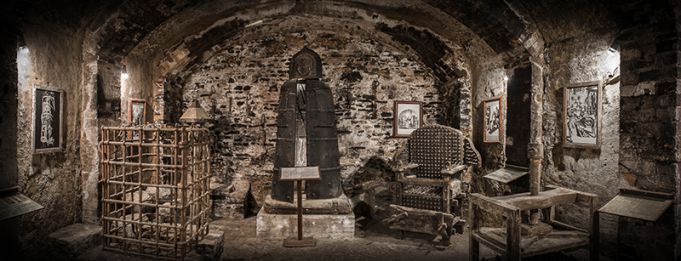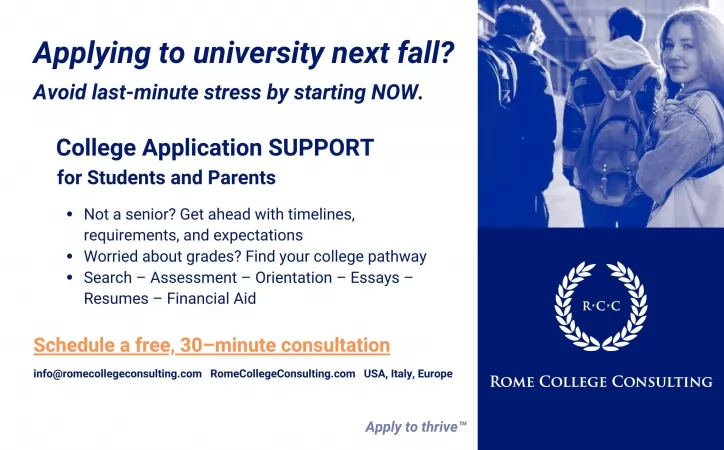This hilltop town in central Tuscany is famed for its stunning skyline of mediaeval towers.
Arriving in this tower-topped town in central Tuscany is always going to be a visual treat, regardless of the season. While the warmer months provide much-photographed scenes of surrounding sunflower fields, arguably the best time to visit San Gimignano is in the autumn or spring, bypassing the summer heat and high-season hordes of tourists. However, visiting between January and March is likely to be disappointing, as many businesses close during the off-season.
Rising on a hill 334m above sea level, the town is visible from a considerable distance thanks to its skyline of towers, built by local merchant families during the Middle Ages. These mediaeval traders made a fortune by exploiting the town's key position – between Sienna and Florence – on the heavily-trod Via Francigena pilgrimage route to Rome, about 300 km to the south.
History of San Gimignano
Although constructed ostensibly to protect wealthy families from periodic invasion by marauding intruders, in reality the towers were status symbols of prestige and power. Due to the confines of the fortified hilltop town, merchants were unable to build grandiose palaces. Instead they looked to the sky, vying with each other to build the highest and most magnificent towers.
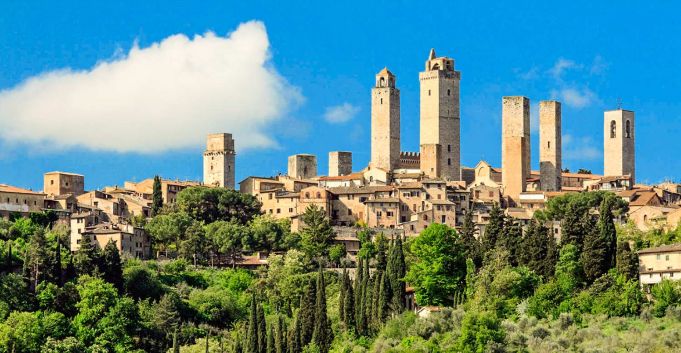
However, in 1348, San Gimignano suffered a devastating blow with the arrival of the Black Plague, which decimated its population and led to a swift reversal in its fortunes. With the once steady flow of pilgrims now re-routed through Florence, the town suddenly lost its core revenue and faded into obscurity before being rediscovered by 19th-century visitors on the Grand Tour of Italy.
The town's authentic appeal was also helped by Cosimo I de’ Medici, Lord of all Tuscany, who in the mid-16th century decreed that San Gimignano could not be enlarged or restructured. This has resulted in the preservation of the pre-baroque state of the historic centre which is classified as a UNESCO World Heritage Site.
What to see in San Gimignano
Modern-day visitors can marvel at splendid examples of gothic and romanesque architecture including 14 of the original 72 towers, the tallest being the 54 m Torre Grossa which is open to the public. Happily, all these centuries later, the pilgrims of old have been replaced by an abundance of tourists and the town thrives once again.
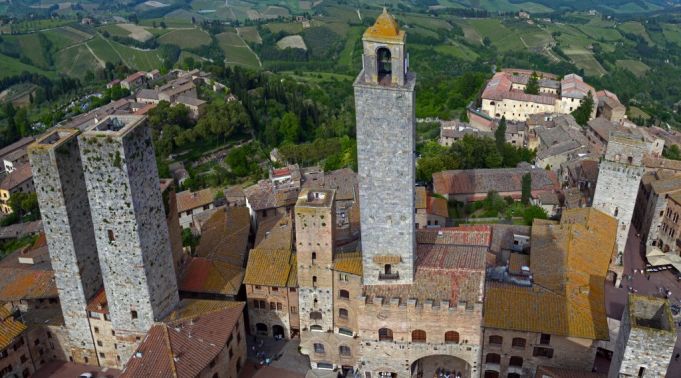
Although San Gimignano gained its name from the bishop of Modena, St Geminianus, who – according to legend – saved the inhabitants from barbarians, the town is best associated with St Serafina. Known locally as Fina, this pious orphan girl died of a debilitating disease, aged 15, after five years of agony and spiritual devotion. Her feast day is celebrated each year on 12 March, the anniversary of her death in 1253.
Renaissance jewel
The S. Fina chapel – one of Italy's most prized examples of renaissance architecture, painting and sculpture – is the star attraction of the town’s fresco-filled Collegiata Church of S. Maria Assunta. The chapel contains two exquisite scenes, painted by Domenico Ghirlandaio, central to Fina's life: her vision of Pope Gregory announcing her impending death, eight days before she died, and her subsequent funeral.
Located in the central Piazza del Duomo, the Collegiata Church also contains fresco cycles depicting scenes from the Old and New Testaments – described by UNESCO as "works of outstanding beauty" – by artists such as Benozzo Gozzoli, Taddeo di Bartolo, Lippo Memmi and Bartolo di Fredi.
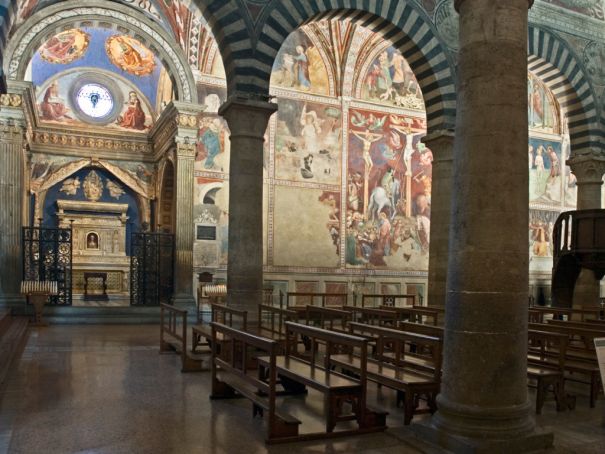
The town hosts numerous art museums such as the Pinacoteca, which houses examples of mediaeval and high renaissance works, and the Museum of Sacred Art, a highlight of which is a selection of wooden sculptures dating from the 14th century.
Quirky museums
San Gimignano is also home to possibly the strangest, and most disturbing, museum in Italy. The Museum of Mediaeval Torture is spread out over two nearby buildings, whose graphic contents are equally unsettling, and one ticket allows access to both. It recounts, in gruesome detail, the torture methods of the Middle Ages. Should its text descriptions not be horrendous enough, the museum provides some visual aids including tortured wax models and blood-curdling illustrations.
It also exhibits a range of execution and torture devices, from iron maidens and guillotines to eye-gougers and fingernail extractors, and even throws in a mediaeval chastity belt for good measure. It is a compelling but nightmarish experience, and not suitable for small children or the squeamish.
More family-friendly visits are provided by the Ornithological Museum with its ageing but charming collection of stuffed birds assembled by Tuscan noblewoman Marchesa Marianna Panciatichi Ximenes d'Aragona Paolucci. Located inside a deconsecrated church, the museum currently houses about 370 specimens, in various states of repair, collected locally between 1866 and 1911. A few streets away, the San Gimignano 1300 museum provides a multimedia glimpse into life 700 years ago, with a scale model of the town featuring clay recreations of its buildings and glorious past.
Inspiration of artists and writers
In modern times the town has influenced numerous artists and writers including the English novelist E. M. Forster who, after staying in San Gimignano, wrote about the fictionalised Monteriano in his 1905 novel Where Angels Fear to Tread. The Dutch graphic artist M. C. Escher immortalised the town's skyline in two woodcut prints in the early 1920s.
San Gimignano also featured prominently in Franco Zeffirelli’s 1999 semi-autobiographical film Tea with Mussolini whose central characters – a group of English ladies known as gli Scorpioni – defend the town from demolition during the German withdrawal at the end of world war two.
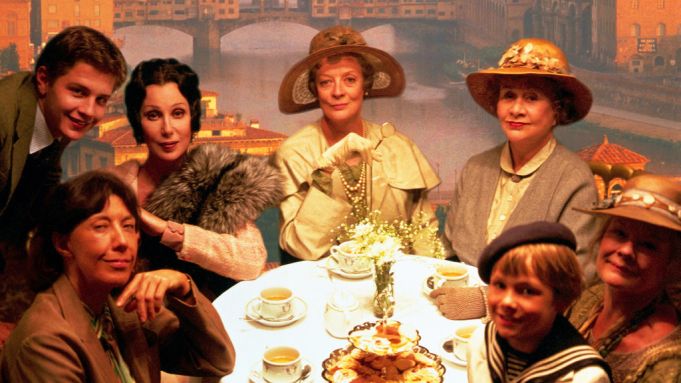
San Gimignano is not all about art and history, however. Its centre offers an abundance of tourist shops selling ceramics, leather goods, artworks and food, while its restaurant menus contain regional specialties including rabbit cooked with the local Vernaccia white wine or risotto made with locally-produced saffron.
All year round those arriving by coach must walk the final stretch to the centre from the car park halfway up the hill. However, motorists are permitted to check in at their hotel, provided they return their vehicle to the car park below within ten minutes.
Exploring area around San Gimignano
If based in San Gimignano for a few days, there are a number of hilltop villages in the surrounding area that are well worth exploring. Chief among these is the tiny fortified Monteriggioni, whose 570 m-long circular walls follow the natural contours of the hill and date to the early 13th century.
Among the best preserved mediaeval walled towns in all of Italy, Monteriggioni was built by the Republic of Siena to observe the Via Francigena in the direction of Siena's historic rival Florence. Resembling a film set, the beautifully restored village now caters exclusively to tourists, some of whom get married in the romanesque church of S. Maria Assunta in its central square, Piazza Roma. It is also possible to walk along the ancient battlements which offer panoramic views over the Chianti and Montagnola Senese countryside.
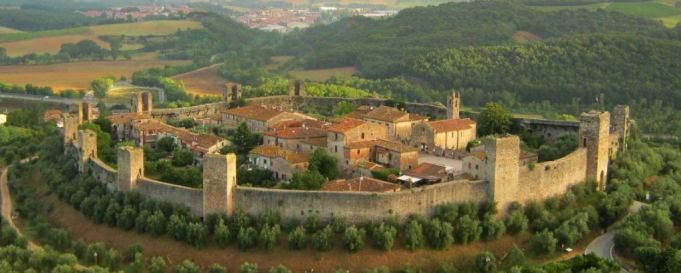
Veering off the Via Francigena, about 50 km southwest of Monteriggioni is the quaint mediaeval village of Radicondoli. Ruled by the Medici from 1554 until the fall of the powerful Florentine dynasty in the 18th century, Radicondoli is surrounded by valleys of dense, wildlife-filled woodlands, and its graveyard contains the final resting place of pioneering Italian composer Luciano Berio, who died in 2003.
However, as dusk nears, return to San Gimignano and watch the sun set over the town of fine towers and its seven-century-old silhouette.
By Andy Devane
This article was first published in the October 2016 edition of Wanted in Rome.
Where to stay in San Gimignano
Hotel Leon Bianco, Piazza della Cisterna 13, tel. 0577941294, website.
Where to eat in San Gimignano
Ristorante Peruca', Via Capassi 16, tel. 0577943136, website. Tourist information
In English, tourist website.
How to get to San Gimignano from Rome
By car: A1 Roma-Milano northbound, taking Valdichiana exit. Follow directions for Siena, exit Poggibonsi Nord. 11 km to San Gimignano.
By public transport: From S. Maria Novella station in Florence, take the Empoli-Siena line to Poggibonsi, 13 km from San Gimignano. Poggibonsi is connected by numerous Sita bus services with San Gimignano, see Sitabus website.
Cover photo: LianeM / Shutterstock.com.
General Info
View on Map
San Gimignano: A town of fine towers in Tuscany
53037 San Gimignano, Province of Siena, Italy



